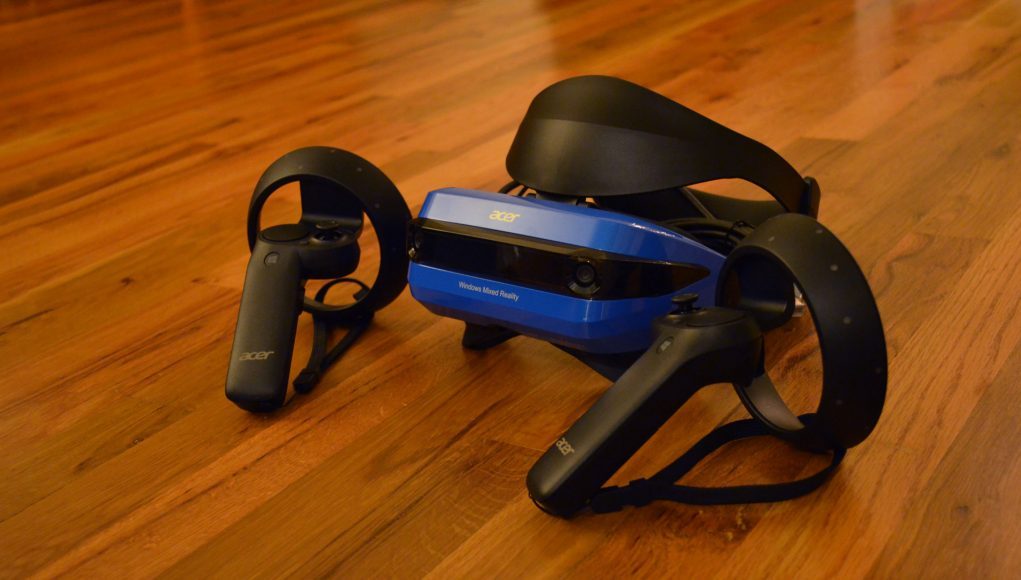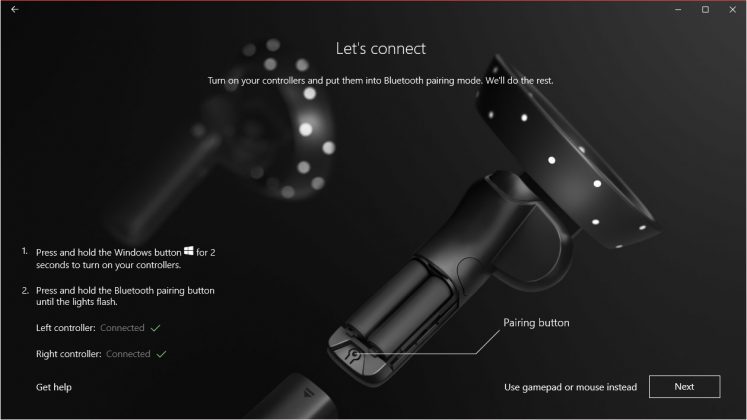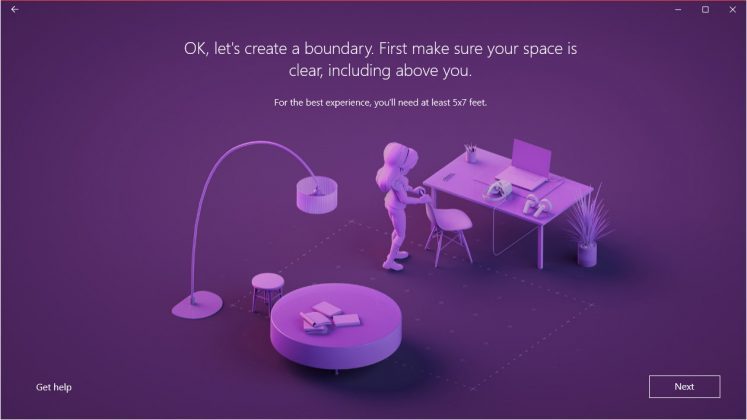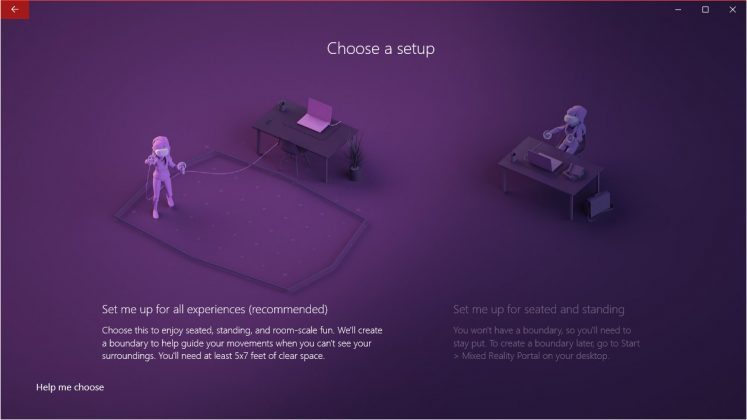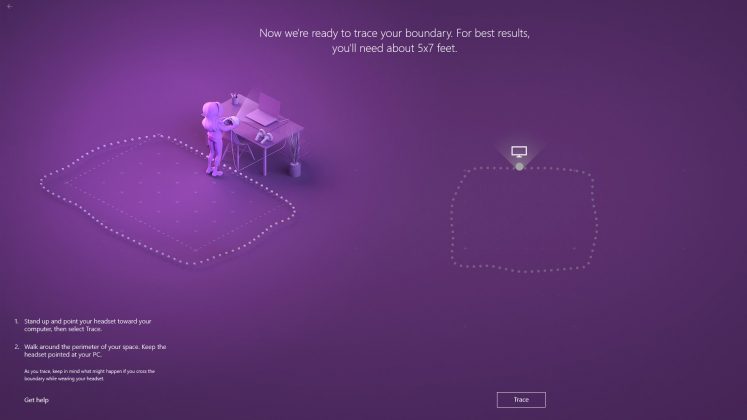Setup & Experience
Not counting installing the Windows Fall Creators Update, the first time setup for the headset took me just under 10 minutes, which is a pretty awesome feat compared to the first time setup processes I’ve experience for the Vive, PSVR, and Rift. If I needed to do it in a hurry I’m confident it could be done in 5 minutes or less.
The lack of external sensors is of course the major time saver, thanks to the headset’s inside-out tracking. It’s also pretty cool that any build of Windows 10 newer than the Fall Creators Update is essentially plug-and-play ready for a Windows Mixed Reality headset. Developers are going to love that portability, and so are friends who want to share the VR experience.
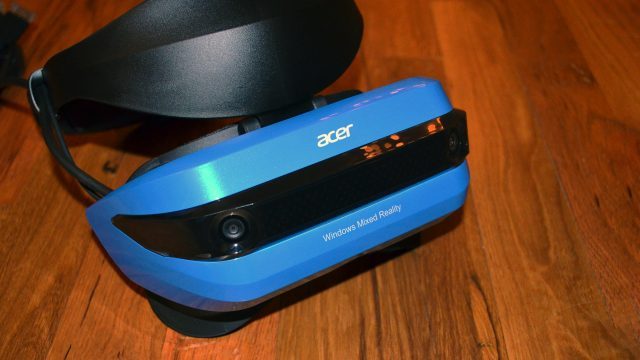
The inside-out head tracking is the best I’ve ever seen in practice; it’s impressively robust and precise, and at times that it does lose tracking, it does so without jumping or freaking out; instead you’ll see a little message which asks you to look around in order to reestablish tracking. To my understanding, the tracking cameras use visible light, which means that poorly illuminated rooms could see decreased performance, though I was surprised to find the tracking working fine even at levels of light low enough to be uncomfortable for book reading.

The inside-out controller tracking is a bit of a different story. It’s decent, but not on the same level as the head tracking. The deal with the controller tracking is that you only get good positional tracking from the controllers when they are in the field of view of the cameras on the front of the headset. One important thing to note is that the field of view of the cameras is larger that your view through the headset. So even though the controllers might be out of your sight, there is still a ways they can go before being out of sight of the cameras.
When they do leave the camera’s field of view, they rely only on their internal sensors to assess their location, but without the aid of the cameras that becomes inaccurate quite quickly, so only brief moments outside of the camera view is tolerated before the controllers freeze in place and only track rotation until they re-enter the camera view.
When the controller tracking is working at its best (in front of the cameras), it feels pretty close to what you’d expect from the Rift or Vive. Problems arise when the controllers end up at the edge of the camera field of view. Expect to see regular small corrections and the occasional controller freakout, all of which is made more obvious when your controllers are laser pointers in the VR space (as they always are in the Windows ‘Cliff House’ hub). Environmental edge cases can lead to very bad tracking; I had a string of Christmas lights hanging on my wall which really through the controllers for a loop. Of course that was easily fixed by unplugging the lights.
The controller tracking isn’t bad by any means. After I stress tested them with Racket: NX (which is quite near the worst-case scenario for this type of tracking) I came away impressed with how the tracking—though it can jump at times—didn’t majorly impact my play. For casual users of VR, the Windows Mixed Reality Controllers are likely to be satisfactory. Hardcore gamers playing competitively are likely to experience frustration if the tracking lets them down at key moments. Creators needing precision for their work may also demand more out of their controller tracking.

